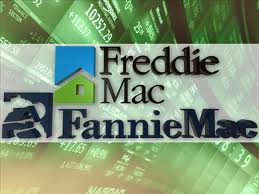American borrowers have come to regard the 30-year fixed rate mortgage (FRM) as the be all and end all of all residential lending products.
 American borrowers have come to regard the 30-year fixed rate mortgage (FRM) as the be all and end all of all residential lending products. The conforming benchmark 30-year FRM is certainly a great deal when interest rates are at record lows, which has been the case since the Federal Reserve Bank launched Operation Twist in 2011 and the third round of quantitative easing (QE3) last year.
American borrowers have come to regard the 30-year fixed rate mortgage (FRM) as the be all and end all of all residential lending products. The conforming benchmark 30-year FRM is certainly a great deal when interest rates are at record lows, which has been the case since the Federal Reserve Bank launched Operation Twist in 2011 and the third round of quantitative easing (QE3) last year.
Borrowers locking into 30-year FRMs for their home purchases and refinances at this time are exercising great financial moxie, but the reality is that the great majority of them will probably begin shopping for a different mortgage a few years from now. Would they refinance or consider buying a new home in the future if the 30-year FRM disappeared from the market?
The End of the Government as a Mortgage Stakeholder
In a recent Time magazine article, business journalist Christopher Matthews argues that most of the proposals to reform the U.S. government’s role in the housing market will probably not work unless the 30-year FRM stops being the benchmark home lending product. 30-year FRMs were created by the New Deal agencies that President Franklin Delano Roosevelt created to deal with the terrible aftermath of the Great Depression. Mortgages before that time were short-term interest-only affairs that lasted no longer than 10 years, and full principal payment was usually due at the end of the term.
Proponents of dismantling Fannie Mae and Freddie Mac and selling their portfolios to private entities are also hinting at the idea of an American mortgage market without a 30-year FRM. Private mortgage investors are unlikely to warm up to the idea of holding on to long-term home loans without having the benefit of interest rate adjustment. Mortgage-backed securities without government guarantees will not be as attractive to investors in the secondary markets.
Since the collapse of the housing and mortgage markets in 2008, the role of the U.S. government in guaranteeing home loans has considerably increased. More than 80 percent of all mortgages in the U.S. are guaranteed to an extent by taxpayers, and this percentage could climb due to the ongoing recovery. It is not only a massive stake but also a huge risk that private lenders are not likely to assume, particularly when 30-year FRM products tie them down.



